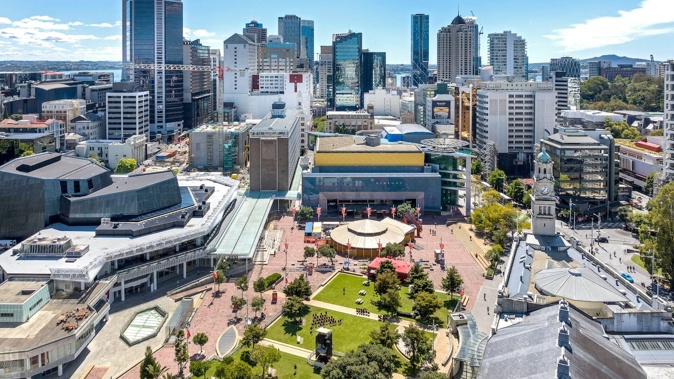
Unemployment rose to 4.8% in the September quarter - worse than in June but better than many pundits had expected.
The seasonally adjusted unemployment rate, as measured by the Household Labour Force Survey, was 4.8% in the quarter, compared with 4.6% in the previous quarter.
”The unemployment rate has grown over the last two years, rising from 3.2% in the September 2022 quarter to 4.8% this quarter,” Stats NZ labour market statistics manager Deb Brunning said today.
The seasonally adjusted employment rate fell to 67.8% in the September quarter.
That was down from 68.4% in the June 2024 quarter and 69.3% in the September 2023 quarter.
Stats NZ data today showed 2.9 million people were employed in the September 2024 quarter.
That was not a major change from the previous year, but it was a smaller proportion of the working-age population, which grew 75,000 annually.
“While net employment remained stable, there were changes in who was employed over the year, as 45,700 more people who had been recently employed became jobless,” Brunning said.
“Compared with last September quarter, there were about a third more people reporting they had left their last job through redundancies or business shutdowns.”
The number of jobless people who had been employed in the last five years and left a role due to layoffs, redundancies, or business closures rose 34.5 percent annually to 55,000 (not seasonally adjusted).
Wage growth has slowed.
In the year to the September 30, all salary and wage rates including overtime increased 3.8%.
That compared with 4.3% in the year to the June 2024 quarter.
Average ordinary time hourly earnings in the quarterly employment survey rose 3.9% in the year to the September 2024 quarter, compared with 5% in the year to the June 2024 quarter.
Earlier
Ahead of all the US election action, Stats NZ will release new labour market data for the three months to September 30 today at 10.45am.
Economists expect New Zealand’s unemployment rate hit 5% in the third quarter of this year, its highest level since 2020.
There is a tight spread of picks for the official unemployment number, ranging from 4.9% to 5.1%. The Reserve Bank has pencilled in 5%.
The data would reveal just how much pain the recent “inflation-correcting” monetary tightening has inflicted on the labour market, ANZ senior economist Miles Workman said.
That would include the impact felt directly (via job losses) and indirectly (via discouraged worker effects, reduced bargaining power and opportunities, and heightened job insecurity), he said.
“The labour market is now well into disinflationary territory, and given typical lags and continued monetary restriction, the [third quarter] data won’t be the worst of it.”–
The jobs market was typically one of the more lagging elements of the economic cycle and that was proving to be the case again this time, Westpac senior economist Michael Gordon said.
“While GDP has effectively stalled since late 2022 (and has shrunk markedly in per capita terms), it’s only in the last year that we’ve seen a meaningful rise in the unemployment rate. Similarly, we expect the unemployment rate to keep rising to a peak of 5.6% in the year ahead, even as lower interest rates provide the spark for a pickup in economic growth.”
Kiwibank economists described it as “the last shoe to drop”.
“But it’s dropping now,” they said. “The Kiwi economy has been in recession for the last two years. Unemployment losses are now climbing as a result.”
This week’s release will also include wage data which should offer more clues as to the speed at which inflation is dwindling.
“Wage growth tends to be even more of a laggard than jobs,” Gordon said.
“Indeed, at face value, it might seem that the adjustment process has yet to begin, with the Labour Cost Index (LCI) accelerating to a 4.3% increase in the year to June.”
But the LCI had been driven to an unusual degree by pay settlements that were signed by the previous Government and phased in over a couple of years, he noted.
“Once we exclude the relevant sectors (health and education), it’s clear that wage inflation has begun to respond to the softening in the jobs market. We expect a 0.7% rise in the LCI for the September quarter.
“On our forecast, this would see annual wage growth slow from 4.3% to 3.8% (and from 3.6% to 3.4% for the private sector).”
ANZ’s workman noted that this was the last big piece of data before the Reserve Bank’s (RBNZ) Monetary Policy Statement.
“Given the RBNZ’s confidence that inflation has been tamed and that an OCR above 4% is considered contractionary, we think it would take a significantly lower unemployment rate than their forecast (5%) to take a 50bps [basis points] cut off the table in November,” he said.
“A higher unemployment rate than that would very likely see market pricing shift further in favour of a 75bps cut.”
Liam Dann is business editor-at-large for the New Zealand Herald. He is a senior writer and columnist, and also presents and produces videos and podcasts. He joined the Herald in 2003.
Take your Radio, Podcasts and Music with you









